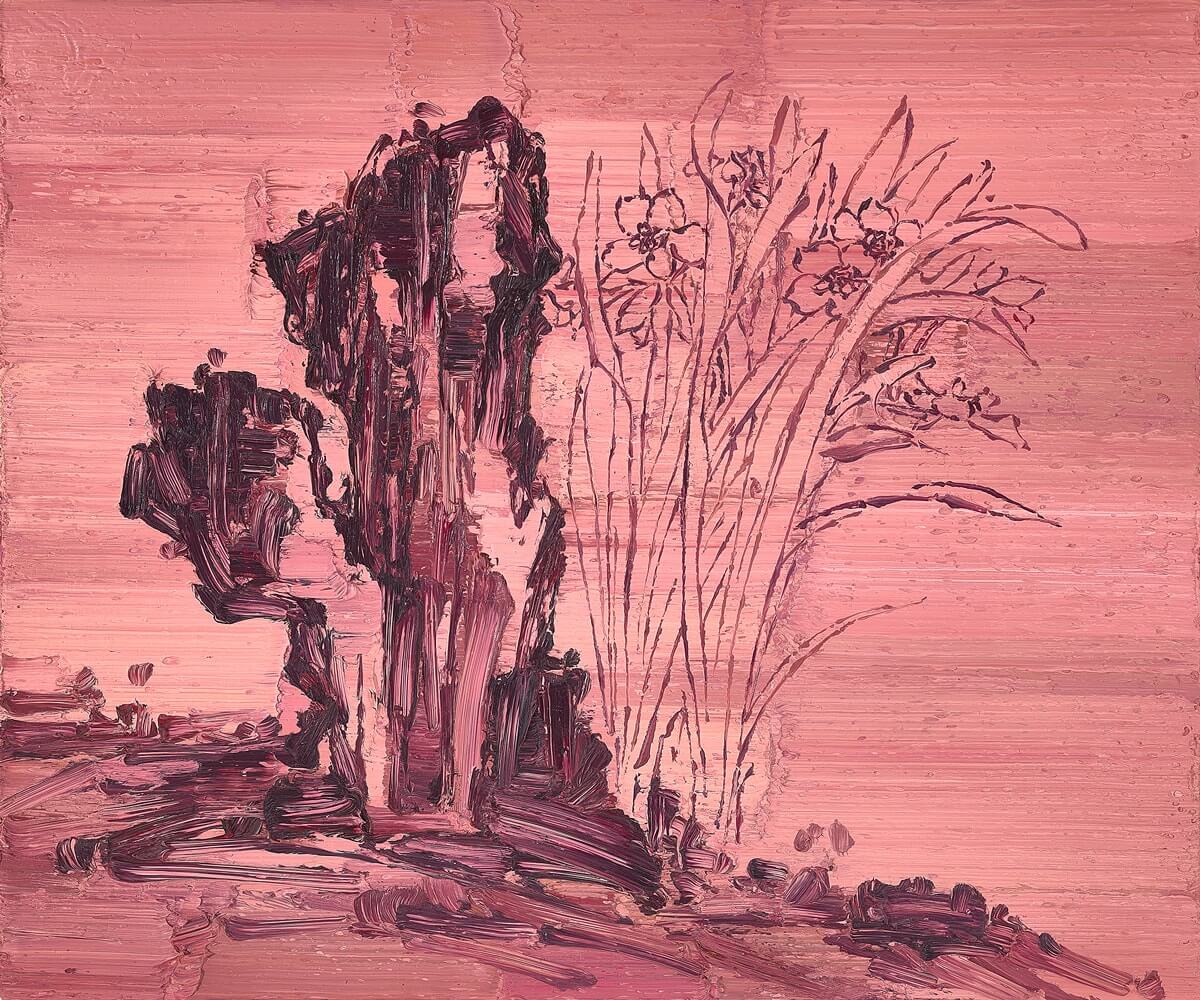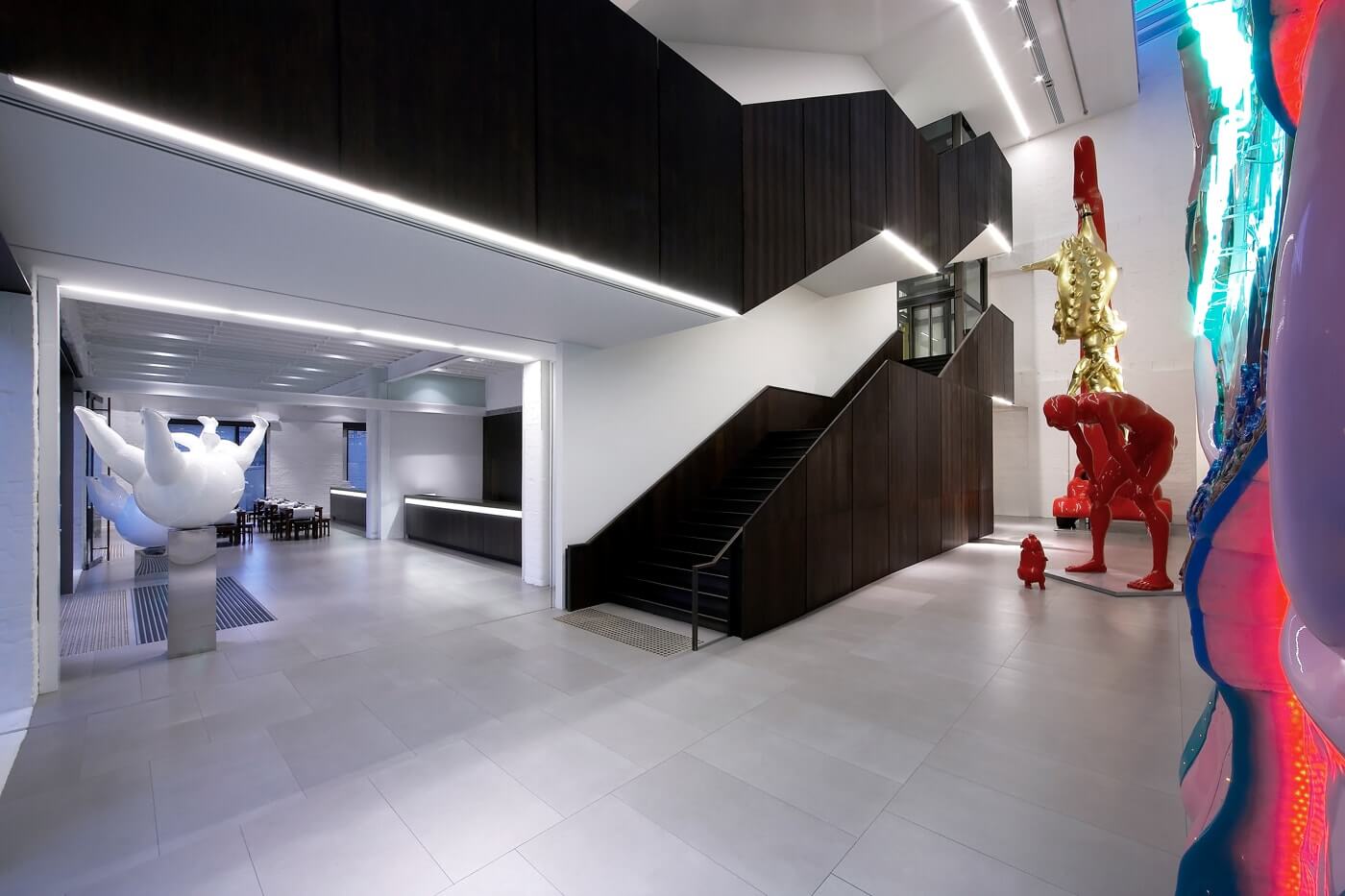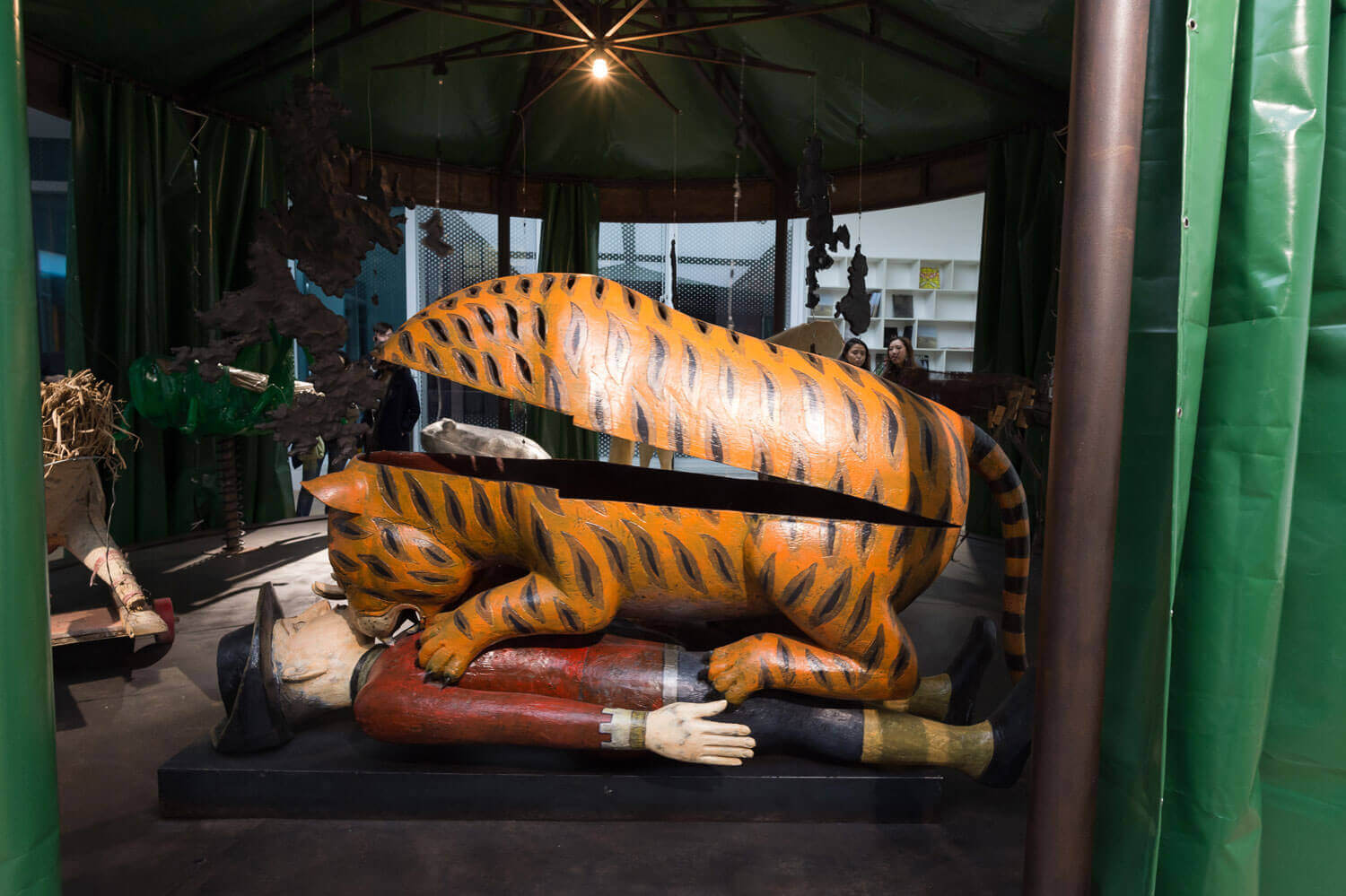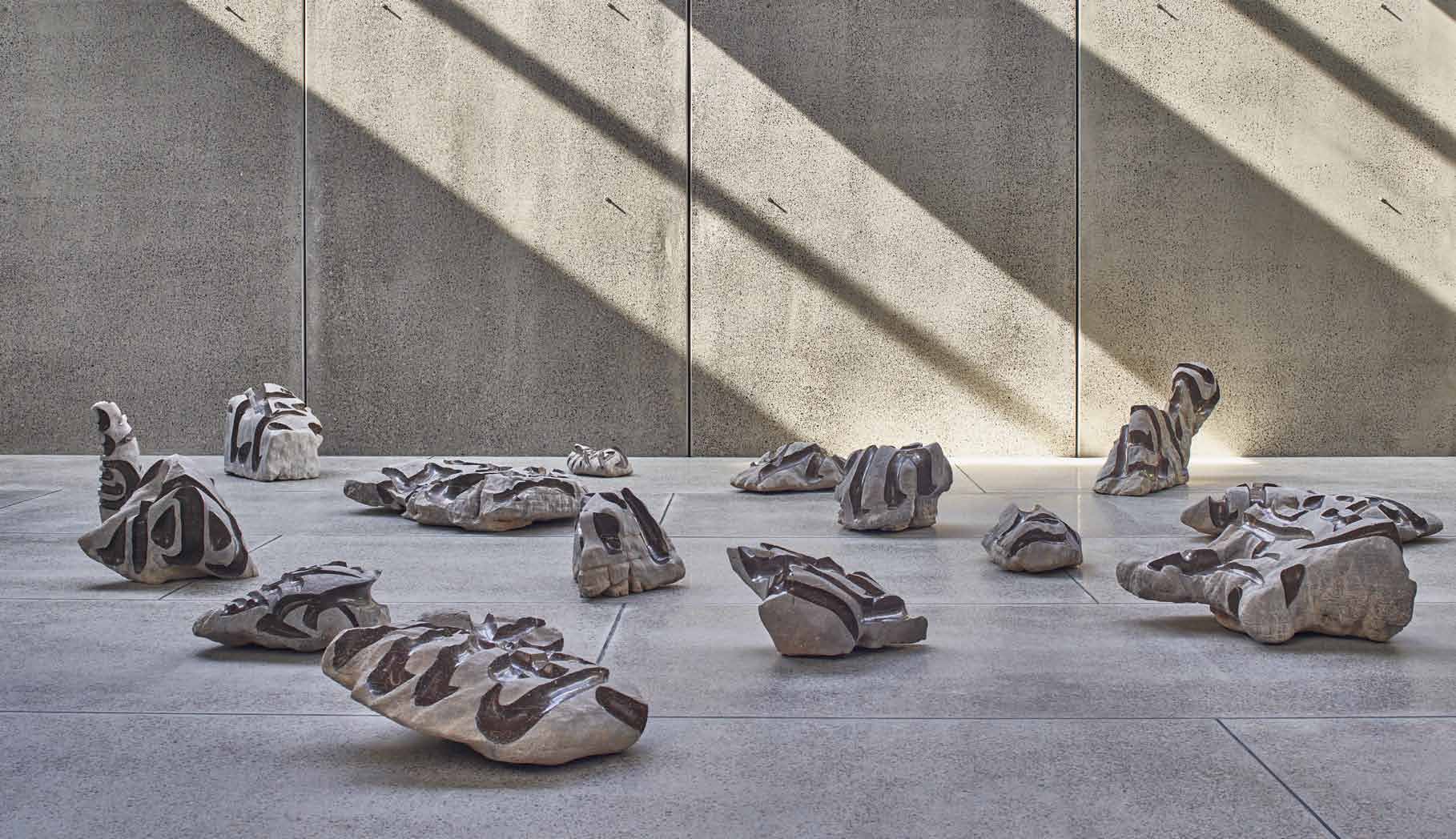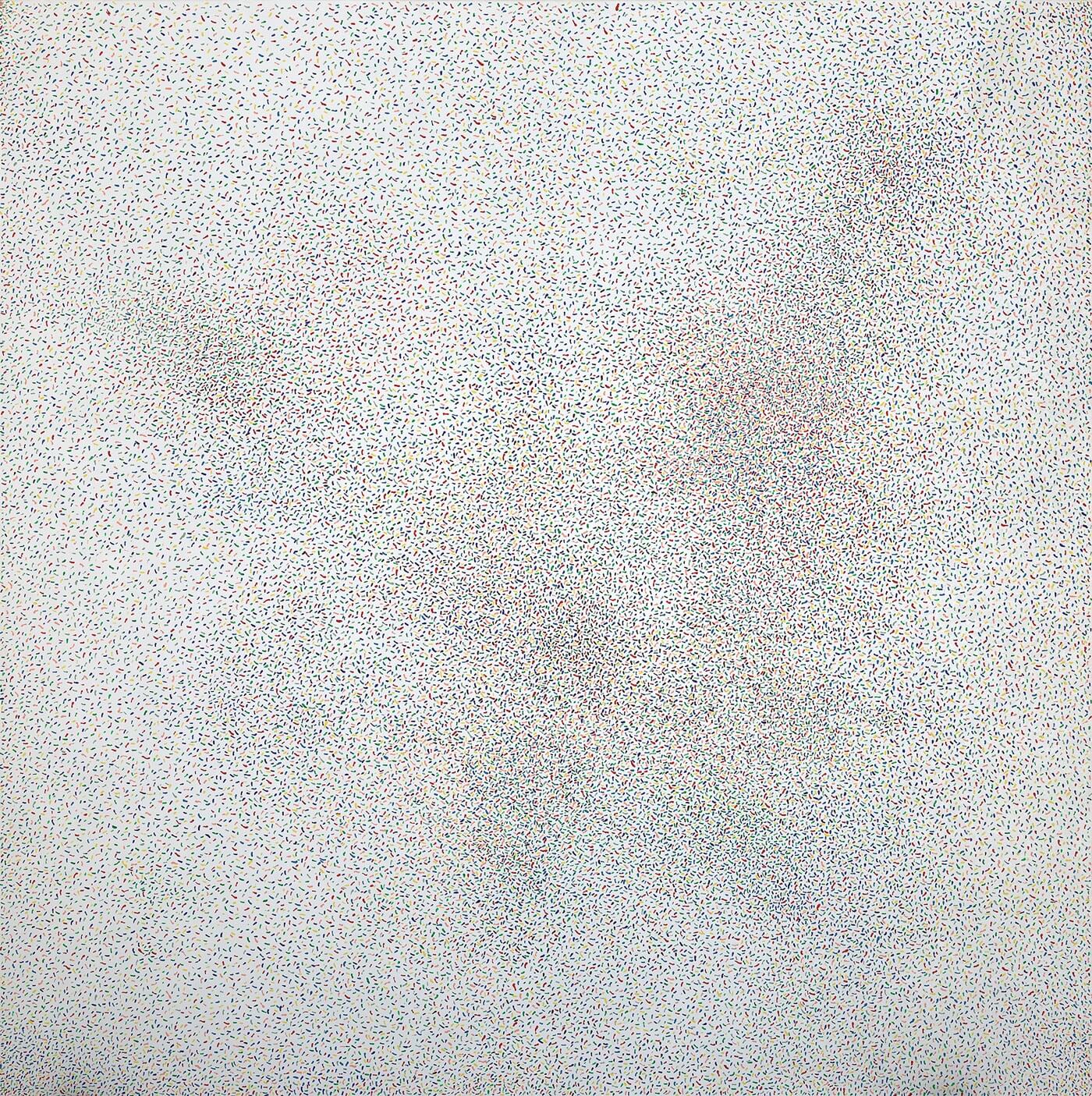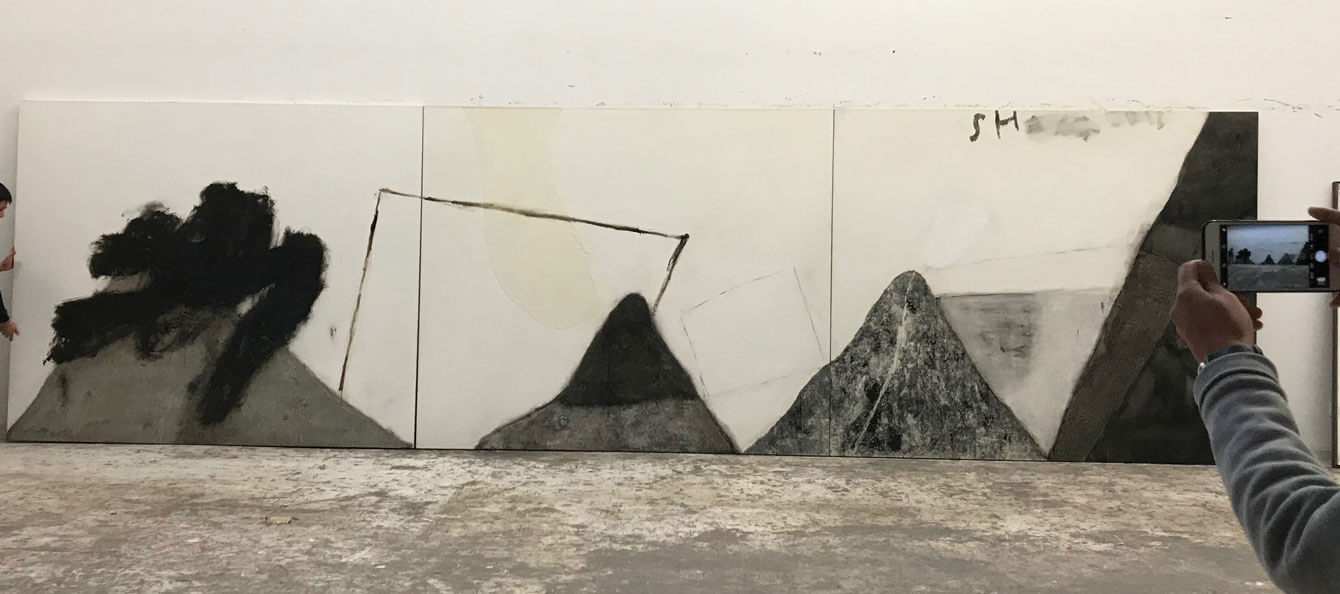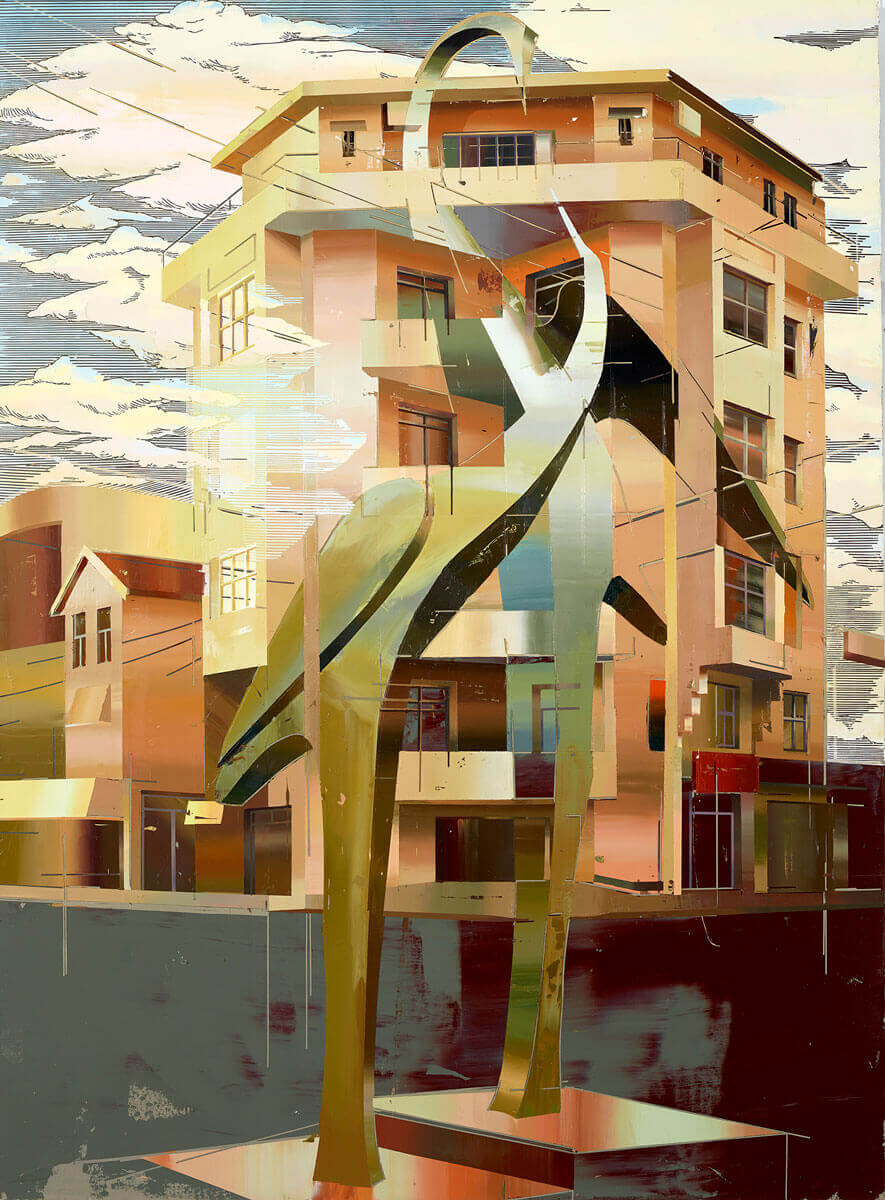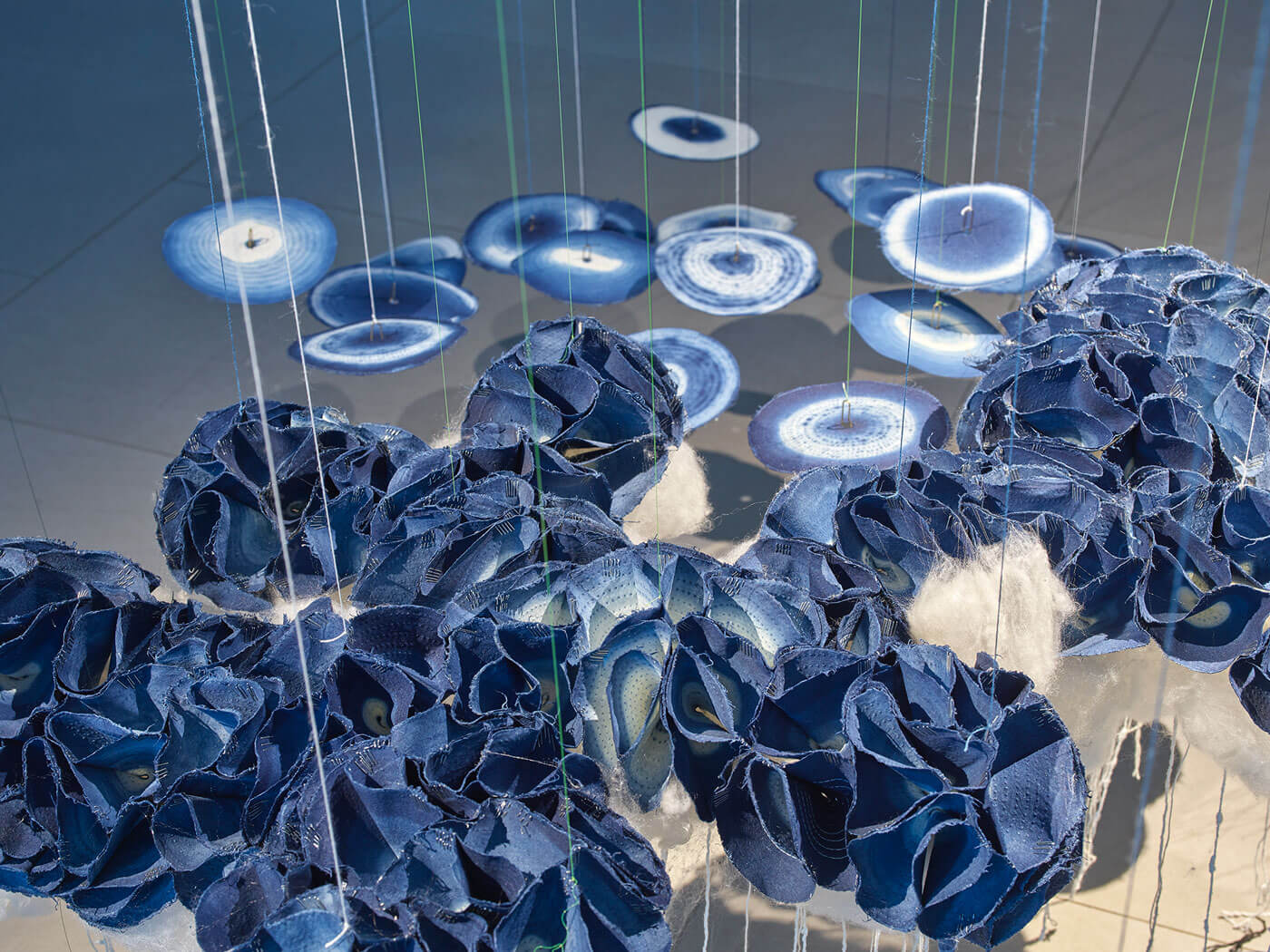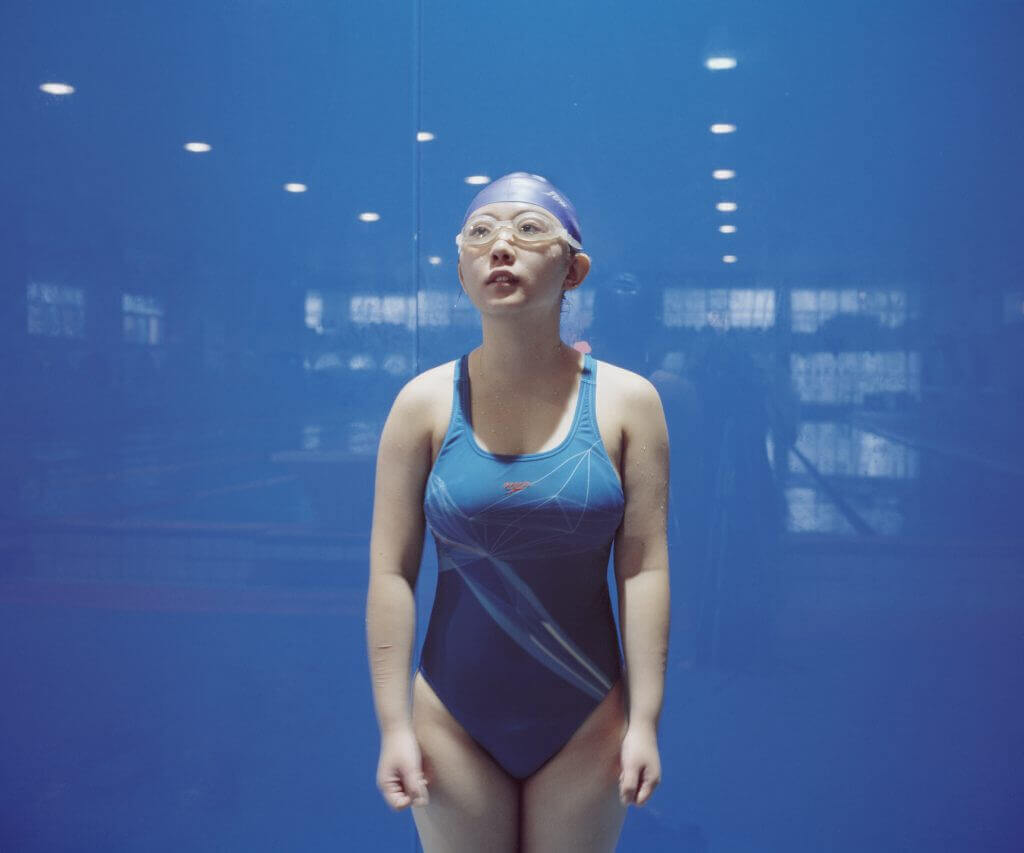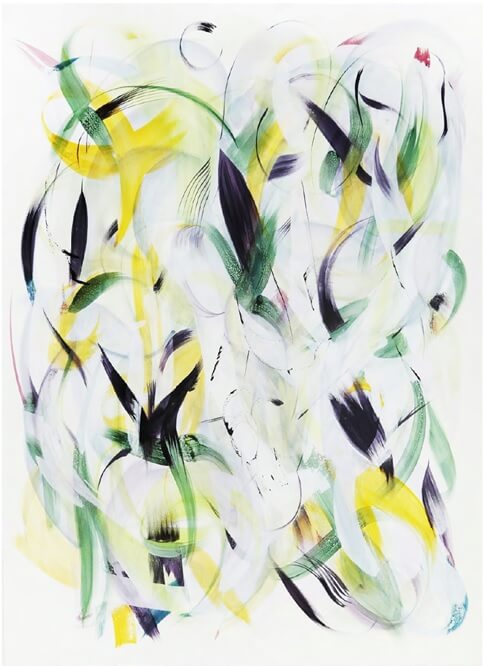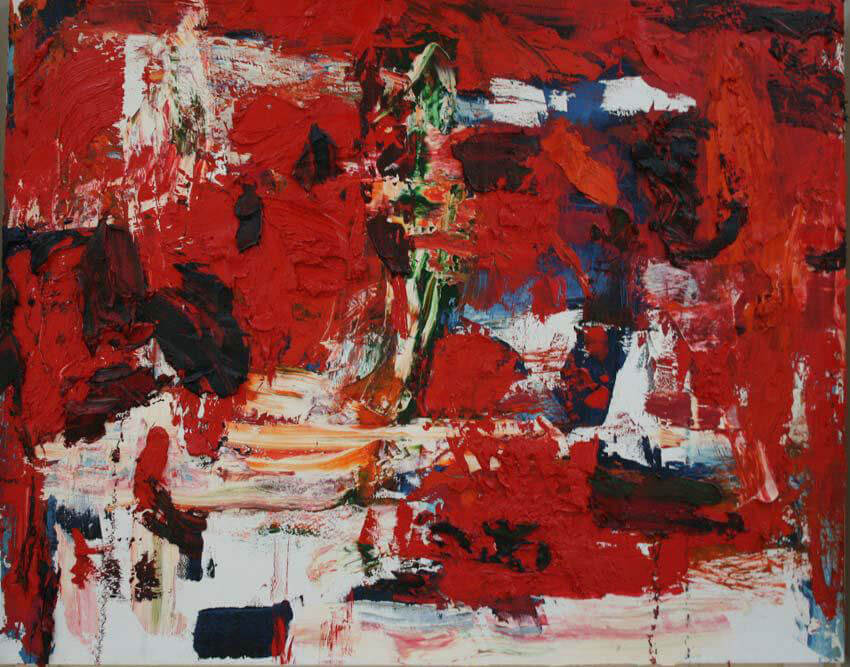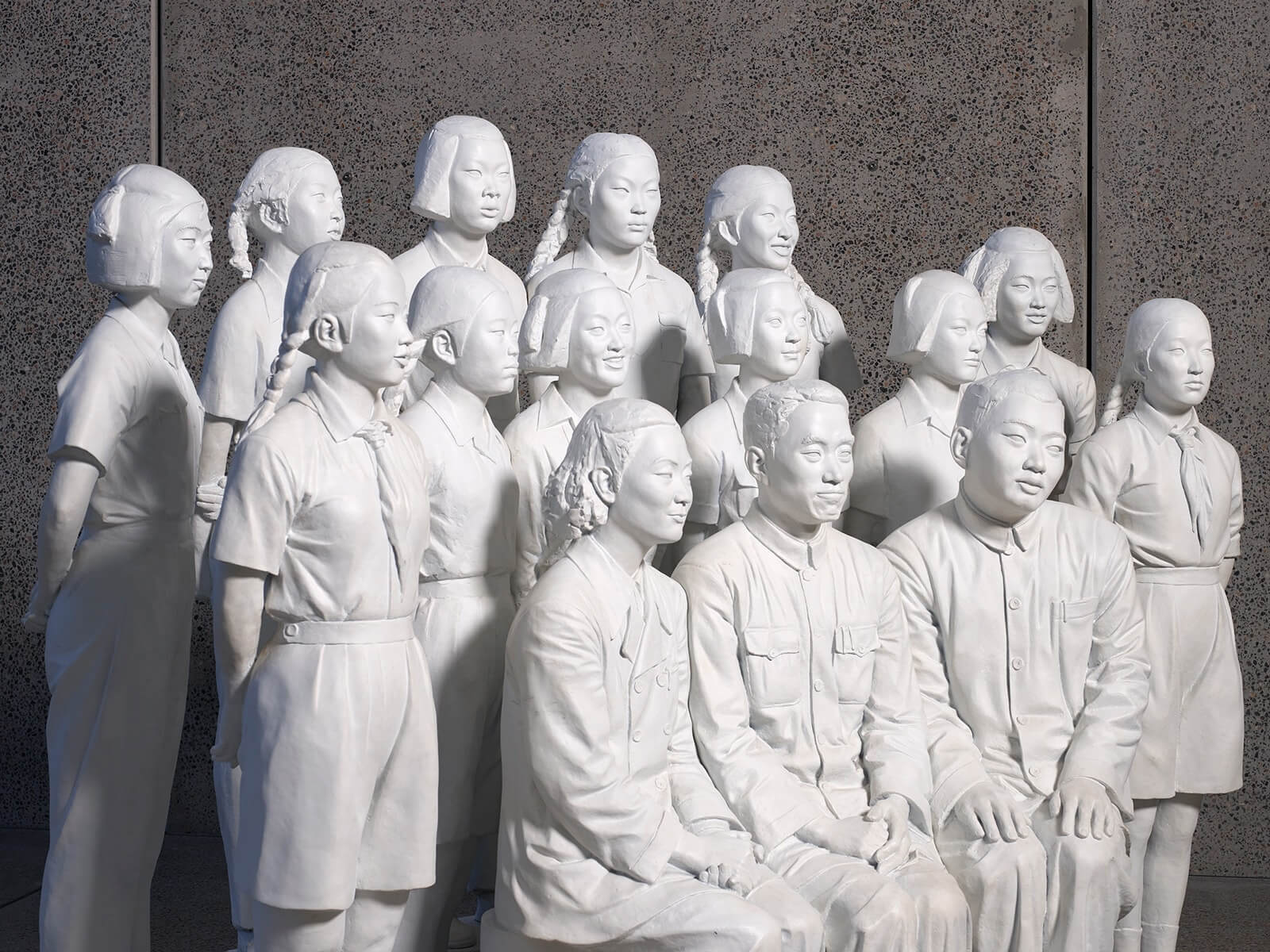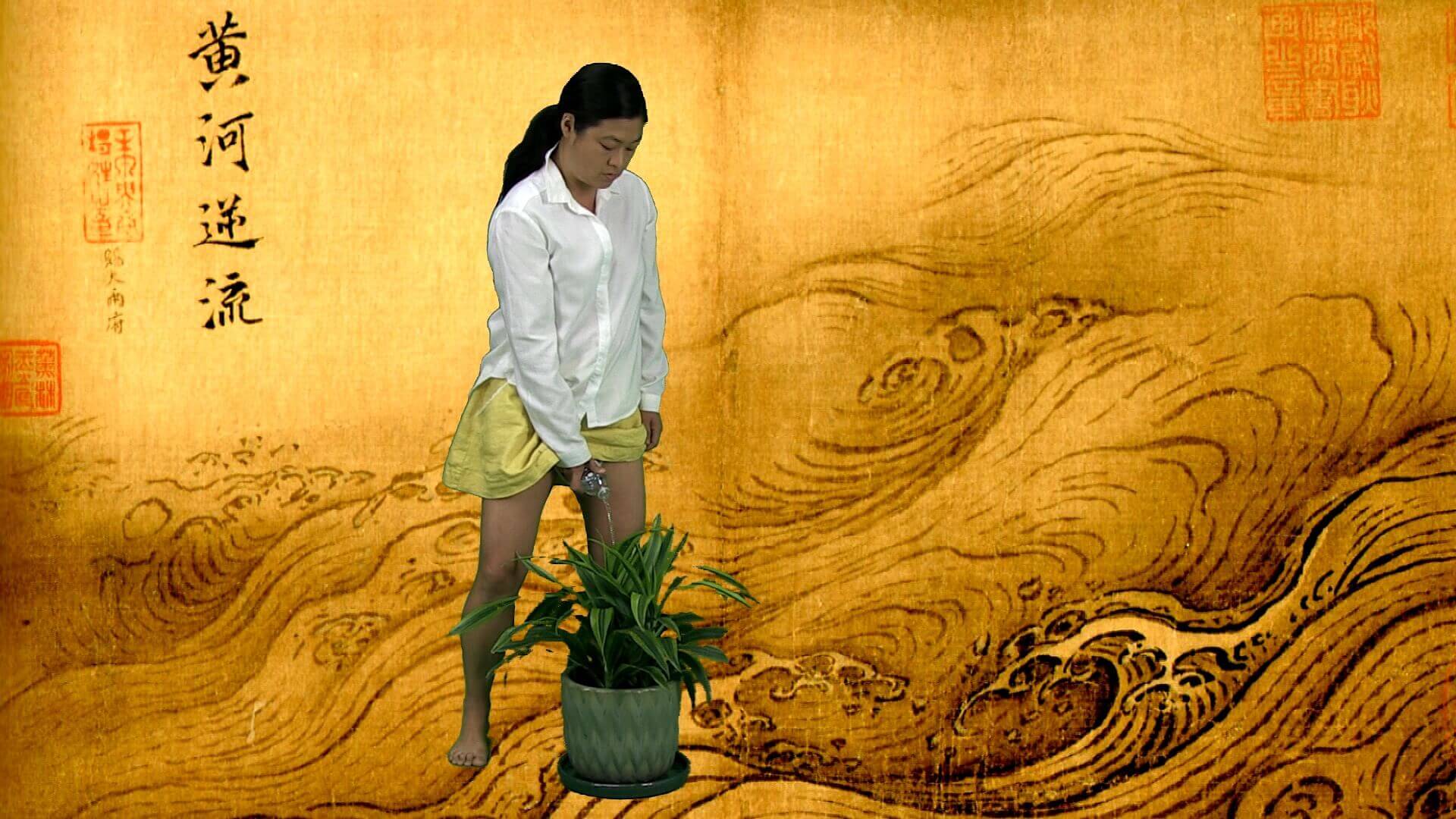Have Fun!
ARTISTS & WORKS /
He Sen 何森
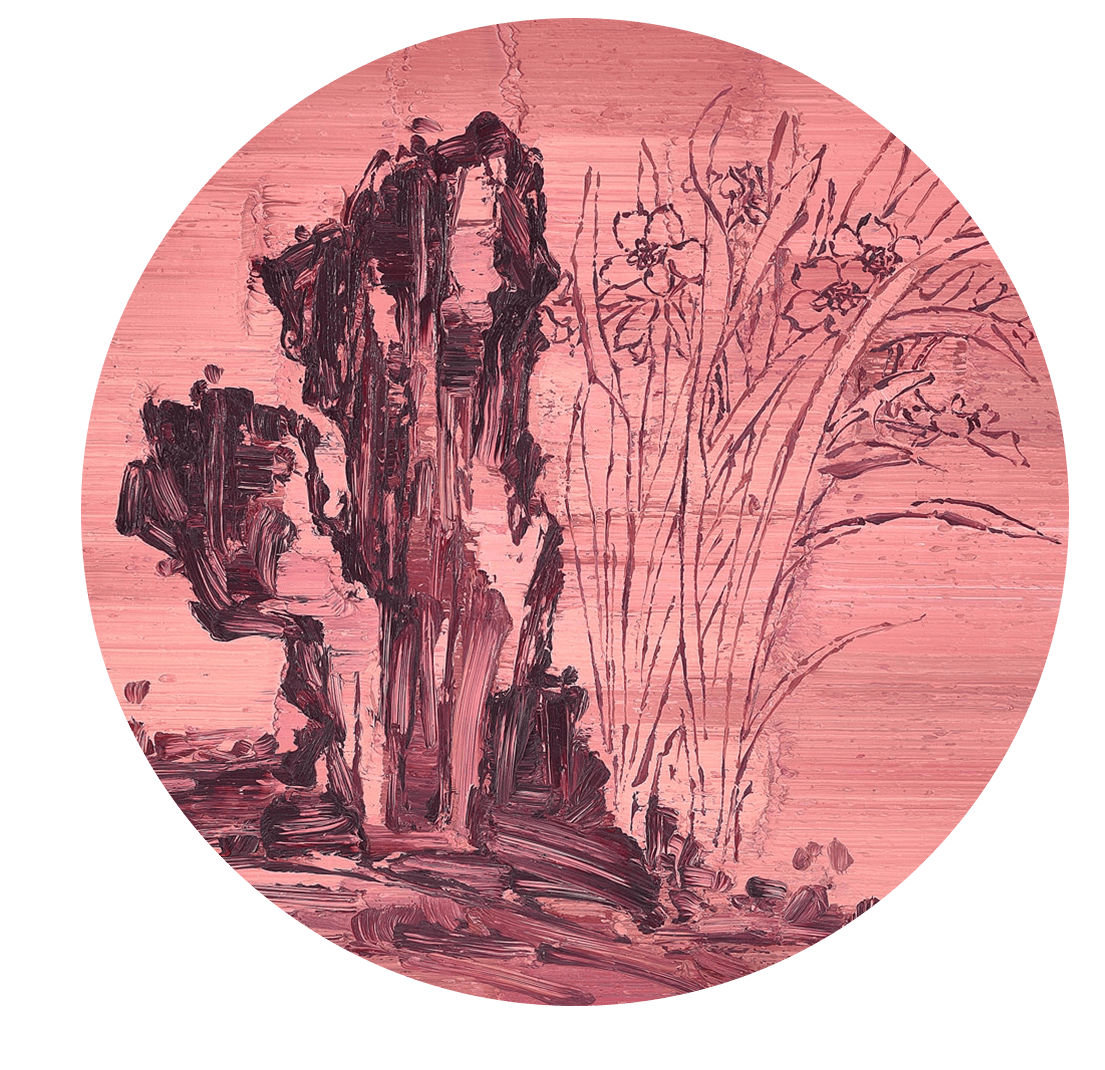
DOB: 1968
POB: Kaiyuan, Yunnan
Education: Sichuan Academy of Fine Arts (Art Education), graduated 1989
Lives and works: Beijing
No. works in collection: 6
BRIEF BIO:
At the Sichuan Academy of Fine Arts, in Chongqing, with Zhang Xiaogang as his professor, He Sen was trained in the distinctively expressionist Sichuan style. From an early series of melancholy portraits of young women, and the dreamy, lingerie-clad contemporary odalisques cuddling soft toys for which he became best known, He Sen transitioned to a painterly examination of Chinese history and culture.
His work has been shown widely, within China and internationally. In the 1990s and the early years of this century, He Sen’s paintings documented the lives of his generation, growing to adulthood in an increasingly consumerist society. His photo-realist portraits of young women lounging in anonymously bland interiors represented a poignant liminal zone between adolescence and adulthood, their dreams and desires as yet unrealised.
Erotic yet curiously melancholy, these paintings critique the emptiness of materialism, and the loss of values in a society that the artist believed had been corrupted by wealth. Working in a tradition of post-Cultural Revolution Sichuan painters, whose ‘Scar Art’ represented what they thought of as a lost generation, examining the inner lives of individuals in a society emerging from collectivism, He Sen too cast a critical eye on his world.
After 2005, however, He Sen turned to Chinese literary and artistic history, appropriating classical paintings. Reproducing elements of iconic Chinese works in oil paint rather than ink, embedding western painting conventions into the iconography of gong bi realism and ink painting, He Sen turned from a focus on the impact of society on the individual to an examination of Chinese culture more broadly.
Similarly, by breaking into the painterly surfaces of flat oil paintings on canvas with stripes, squares or grids of heavy impasto paint (a reminder of the palette knife technique of his student days in Chongqing), He Sen breaks the illusion of pictorialism. He questions the very nature of painting itself: ‘Why should we deal only with what we see on the surface?’ he has asked. ‘In traditional Chinese art, meaning is not only on the surface; it involves the imagination and ideas.’
ARTWORKS:
#1. Accession
Number: 2015.559
Title: Journey to the West – Divine Eagle, Journey to the West – Rebellious Birds Date: 2011 Broad Medium: Oil and Acrylic/Painting Specific
Materials: oil on canvas
Dimensions: 130 x 200 cm, 200 x 200 cm
Description: 2 paintings intended to be shown one above the other (but not joined as a diptych) depicting birds and foliage, the canvas divided into sections.
EXHIBITION HISTORY N/A
Journey to the West—Divine Eagle and Journey to the West—Rebellious Birds (2011) are two canvases intended to be seen as a vertical diptych, one above the other; a soaring eagle is set above a composition featuring two smaller birds perched on the branches of a loosely drawn tree.
The work refers to Journey to the West, a Ming Dynasty novel that records the legendary tale of the trials and tribulations of a Tang Dynasty Buddhist monk who travelled to India in search of sacred Buddhist texts. Journey to the West is part rollicking comic adventure, part journey of spiritual enlightenment, part folk allegory and morality tale. Its vast cast of characters includes animals, deities and demons.
The story has been told and retold in song, opera, film, comic books, cartoons, a video game and an enduringly popular television series. Taking imagery from sections of the story as represented by illustrators in the 1950s, He Sen zooms in to focus on tiny separate moments. The image of the eagle, wings spread, above two unwitting small birds, presents us with a narrative moment, like one frame in a film. Birds of prey such as eagles traditionally represented boldness and heroism in Chinese art. Here the eagle swoops incongruously out of a field of heavy grey impasto. The grey has been dragged horizontally across the canvas, into an area of flat flesh-coloured pigment activated by a schematic and loosely drawn tree, recalling the quick brush marks of a Song Dynasty landscape painter.
The influence of Gerhard Richter, a painter much admired by He Sen, is apparent in the areas of impasto; like Richter, He Sen revels in the sheer physicality of paint.
#2. Accession
Number: 2018.020
Title: Lake Rockery
Date: 2012
Broad Medium: Oil and Acrylic/Painting
Specific Materials: oil on canvas
Dimensions: 50 x 60 cm
Description: A small canvas with impasto paint depicting a rock and trees against a background of rose madder. Part of a series of two works with 2018.021 ‘Lotus Leaf and Flower’
EXHIBITION HISTORY
Ex 19, Supernatural, 2018
#3. Accession
Number: 2018.021
Title: ‘Lotus Leaf and Flower’
Date: 2012
Broad Medium: Oil and Acrylic/Painting
Specific Materials: oil on canvas
Dimensions: 50 x 60 cm
Description: A small canvas depicting leaves and lotus against a grey background of impasto oil paint. Part of a series of two works with 2018.020 ‘Lake Rockery’
#4. Accession
No: 2015.560
Title: The Romance of West Chamber – Farewell at the Pavilion
Date: 2011
Broad Medium: Oil /Painting
Specific Materials: oil on canvas
Dimensions: 300 x 400 cm
Description: Part of a series of three works with 2018.005 The Romance of West Chamber – Reunion and 2018.006 The Romance of West Chamber – Wooing Phoenix. Depicts a scene from the classic novel as illustrated by famous gongbi painter Wang Shuhui (1912-1985) in 1957, later reproduced as a series of postage stamps in 1983.
Appropriated from this 1957 illustration by Wang Shuhui (below right)
https://new.qq.com/omn/20180726/20180726A0HV6I.html (in Chinese)
https://www.guohuashanshui.com/m/view.php?aid=964 (in Chinese)
And this 1983 series of postage stamps based on Wang Shuhui’s 1957 series of illustrations (below left)
https://wt.gg-art.com/news/newsread14/artnews6447.html
EXHIBITION HISTORY NA
He Sen’s painting, The Romance of West Chamber—Farewell at the Pavilion (2011) takes one particular scene, where the young lovers must say goodbye at a pavilion set in a mountainous landscape. He has appropriated a version that is well-known throughout China, as it was used on a postage stamp. Painted by Wang Shuhui (1912-1985), a celebrated gongbi artist, these pictures had been commissioned by the People’s Fine Art Publishing House to publicise the promulgation of the new Chinese marriage laws in 1953. In 1957 she created a series of one hundred and twenty-eight illustrations, most of which were destroyed during the Cultural Revolution. The series of postage stamps based on her illustrations appeared in 1983, so He Sen is reproducing an image familiar to Chinese audiences, redolent of history and national pride.
The canvas is filled with courtly drama and rhythmical movement, the long billowing sleeves and tasselled belts of the two protagonists flowing across the surface, blown by the wind that moves the reeds in the foreground and the branches of the pine trees above. The surface is disrupted by a broad horizontal swathe of grey impasto across its centre, like an intrusion from modernist hard-edge abstraction, interrupting the delicate colour above and below. It is as if we are suddenly watching the Tang Dynasty romance play out on an old black and white TV screen. Playing with juxtapositions of flatness and texture, colour and monochrome, He Sen’s oil paintings recall modernist collage. His selection of imagery that presents a romantic view of ancient China deliberately employs ‘Chinoiserie’, in order to interrogate notions of Chinese-ness in the contemporary world.
#5. Accession
No. 2018.006
Title: The Romance of West Chamber – Wooing Phoenix
Date: 2011
Broad Medium: Oil and Acrylic/Painting
Specific Materials: oil on canvas
Dimensions: 400 x 200 cm
Description: Female character in traditional dress drawn as a black outline above a poem written with oil paint emulating calligraphy
EXHIBITION HISTORY NA
Part of a series of three works with 2018.005 The Romance of West Chamber – Reunion and 2015.560 The Romance of West Chamber – Farewell at the Pavilion, this work depicts a female character from the classic tale drawn as a black outline on a canvas divided into grey and Naples yellow sections.
Below her is a poem written in calligraphy: The text is from the zither (guqin) song “The Phoenix Seeks Its Mate.” The song reportedly originated in the Western Han dynasty, when the poet Sima Xiangru sang the song at a party, wooing the young woman poet Zhou Wenjun. In ‘Romance of the Western Chamber’, Zhang Sheng plays the song to his lover Cui Yingying.
(Source: Wang, Shifu, W. L. Idema, and Stephen H. West. 1995. The Story of the Western Wing. Berkeley: University of California Press, 1995. eBook Collection (EBSCOhost), EBSCOhost )
#6. Accession
No: 2018.005
Title: The Romance of West Chamber- Reunion
Date: 2011
Broad Medium: Oil and Acrylic/Painting
Specific Materials: oil on canvas
Dimensions: 300 x 400 cm
Description: Part of a series of three works with 2018.006 and 2015.560 The Romance of West Chamber – Farewell at the Pavilion. Depicts a scene from the classic tale: a male figure surprises 2 women in an architectural or pavilion-like setting. The right-hand third of the canvas is red, with a lattice like pattern and a vase of flowers drawn against it.
Appropriated from this 1957 illustration by Wang Shuhui, 1957
https://www.twoeggz.com/news/8813643.html (in Chinese)
Part of a series of three works with 2018.006 and 2015.560 The Romance of West Chamber – Farewell at the Pavilion.
Depicts a scene from the classic tale: a male figure surprises 2 women in an architectural or pavilion-like setting. The right-hand third of the canvas is red, with a lattice like pattern and a vase of flowers drawn against it, an allusion to western modernist painting by artists such as Henri Matisse.
MORE COLLECTION HIGHLIGHTS & NEW ACQUISITIONS
Lorem ipsum dolor sit amet, consectetur adipiscing elit. Quisque non augue et ante elementum finibus. Phasellus non cursus nunc. Mauris quam sem, fermentum quis imperdiet sit amet, mollis vitae lorem.

Explore highlights and new acquisitions
SUBSCRIBE
Get access to all our latest news by subscribe here.




